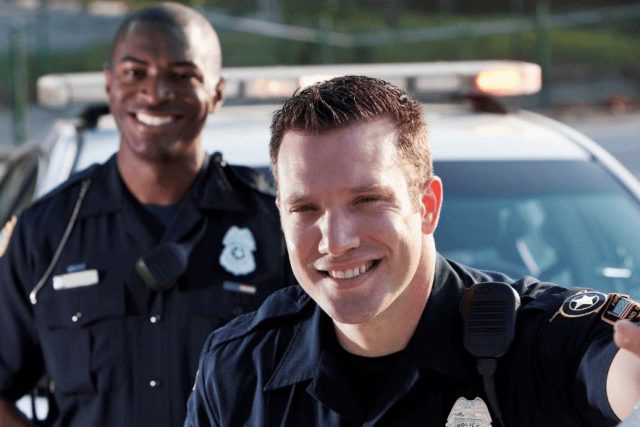Vision plays a crucial role in public safety. Whether navigating busy roads as a licensed driver or responding to emergencies as a police officer, having clear and reliable eyesight is essential to performing duties safely and effectively. That is why specific eye exam standards are required by the Ministry of Transportation (MTO) for drivers and by police services for new law enforcement recruits.
Although both groups share a common need for excellent visual function, the standards they must meet differ depending on the demands of their roles. This article explains what eye exam requirements involve, how optometrists help applicants meet them, and why maintaining strong eye health is vital for careers on the road and in the force.
Why Eye Exams Matter for Public Safety
Driving and policing require complex visual skills that go beyond simply reading small letters on a chart. Good vision ensures that individuals can:
- Quickly detect hazards or suspicious activities
- Judge speed, distance, and movement accurately
- Read road signs and identify faces clearly
- Coordinate eye and body movement efficiently under pressure
- React rapidly to unexpected changes
For drivers, vision issues can lead to slower reaction times, lane drift, or failure to notice road warnings. For police officers, reduced vision can compromise situational awareness, safety in high-risk environments, and accurate use of equipment.
That is why vision standards are carefully enforced before licenses or positions are granted.
MTO Vision Screening Requirements for Drivers
The Ministry of Transportation mandates vision checks for individuals applying for or renewing a driver’s license in Ontario. These assessments ensure that drivers meet the minimum functional visual ability to operate a vehicle safely.
Key components of the MTO eye exam include:
Visual Acuity
Applicants must demonstrate sufficient sharpness of vision, typically 20/50 or better with both eyes open when looking straight ahead. If glasses or contacts are required to meet the standard, the license may carry a corrective lens condition.
Peripheral Vision
Also known as side vision, this is crucial for detecting vehicles, pedestrians, and cyclists entering the roadway. The MTO requires a minimum acceptable field of vision that allows awareness of surroundings without turning the head excessively.
Binocular Function
Both eyes must work effectively together to judge depth and distance — essential for lane changes, merging, and parking.
When drivers do not meet these vision requirements, they may be asked to undergo a full optometric examination and submit a Medical Report to determine whether driving privileges can be granted or maintained.
Higher Vision Standards for Police Applicants
Police work demands sharper and faster visual responses than the general driving population. Recruits must be capable of performing in unpredictable and high-stress conditions, often in low-visibility environments.
Common components of police vision testing include:
Enhanced Visual Acuity
Most police agencies require 20/20 vision in each eye, with or without corrective lenses. If corrective lenses are used, a backup pair must typically be carried during duty.
Colour Vision Assessment
Colour perception tests ensure applicants can accurately interpret signals, clothing descriptions, and evidence. Failure in colour testing may lead to restrictions or disqualification depending on agency policy.
Depth Perception
Crucial for judging distances during driving, handling equipment, and responding to fast-moving situations.
Peripheral and Night Vision
Officers must remain fully aware of their surroundings, especially during nighttime operations and pursuits.
Some police forces also perform OCT (Optical Coherence Tomography) scans or check for underlying eye diseases that could worsen over time.
Laser Eye Surgery and Corrective Vision Options
Many applicants explore LASIK or PRK surgery to improve visual acuity, especially if they do not initially meet the required standards for police work. In many cases, corrective surgery is acceptable, provided:
- Vision remains stable after the recovery period
- No complications are present
- A report from the optometrist confirms suitability
Optometrists play an important role in providing pre- and post-surgical evaluations to ensure long-term visual success.
The Optometrist’s Role in Certification
Optometrists are authorized to complete the necessary vision assessments and documentation for both MTO licensing and police applications. Their responsibilities include:
- Conducting comprehensive eye exams with advanced technology
- Identifying and treating vision issues or eye conditions
- Recommending corrective lenses or therapies if needed
- Completing official visual assessment forms for submission
- Advising applicants on how to maintain eye health for long-term safety
Their expertise ensures that only individuals with adequate vision enter roles where public safety depends on strong visual performance.
Don’t Wait Until It’s Too Late
Often, vision changes happen gradually. Applicants who delay eye exams may discover problems only when their career plans or license renewal is at stake. Scheduling regular eye evaluations ensures:
- Faster intervention if a condition is developing
- Better results from vision correction options
- Stronger readiness when applications are submitted
Those pursuing careers in law enforcement are encouraged to start eye screening early to avoid unexpected setbacks in the recruitment process.
Conclusion: Clear Vision for a Safer Future
From the open roads to frontline police work, vision is one of the most important tools for keeping the public safe. Meeting the established standards of the Ministry of Transportation and police forces isn’t just a regulatory step it is a commitment to responsible and dependable performance. With proactive care, expert optometric support, and regular eye health monitoring, applicants can confidently pursue their ambitions — ensuring they meet the visual demands that protect themselves, their teams, and the communities they serve.




MOST COMMENTED
Tour and Travel
From Spice Farms to Sunset Cruises: Unique Things to Do in Zanzibar
Shipping
How Modern Ports Simplify Customs Clearance for Exporters and Importers
Eye Care
From the Road to the Force: Eye Exam Standards for MTO and Police Applicants
Personalised Bathrobes
Creative Ways to Use Personalized T-Shirts for Themed Birthday Celebrations
Cleaning
Everything You Should Know Before Booking Exterior Window Cleaning Services
Airport transportation
Why Booking a Zanzibar Airport to Stone Town Taxi in Advance Makes All the Difference
Fashion
Why Custom Printed Hoodies Are the Ultimate Way to Express Your Style